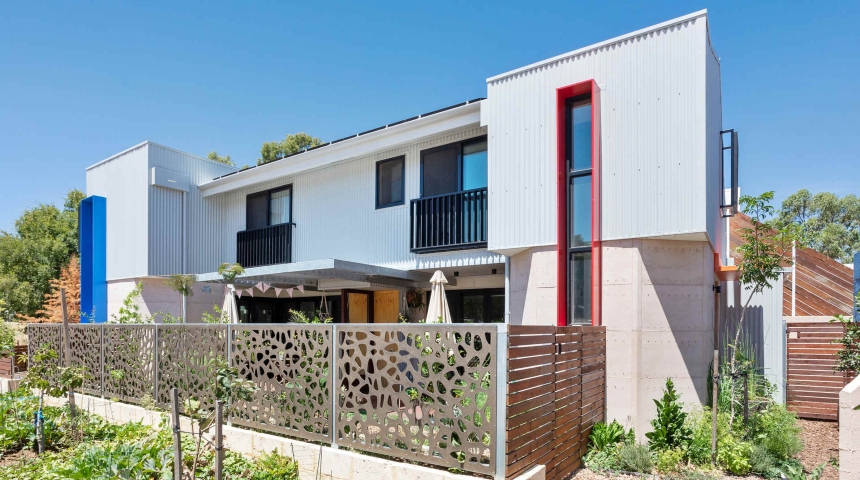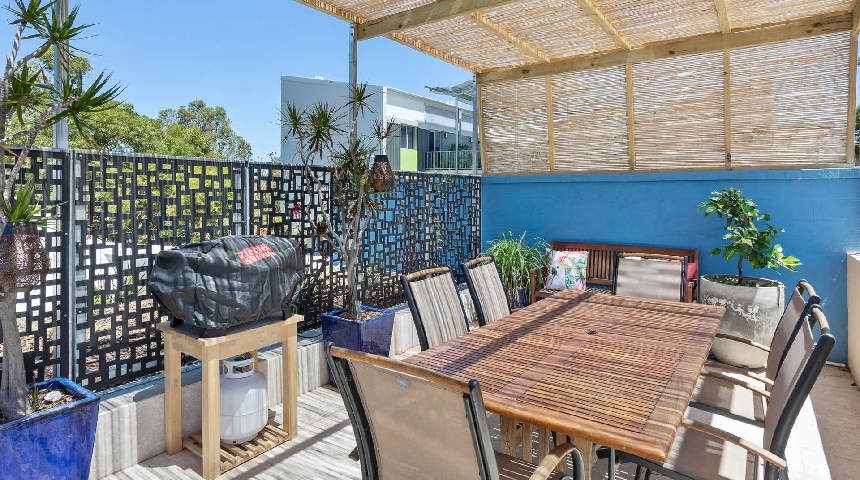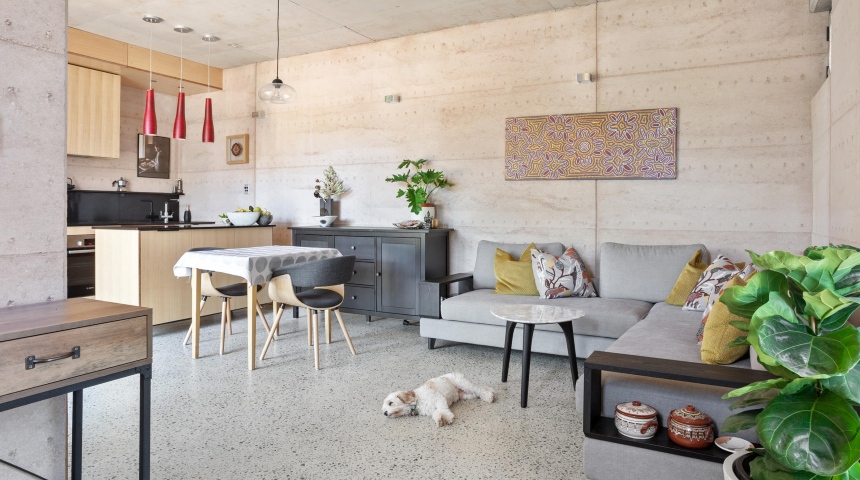
Associate Professor Martin Anda shares what it will take for Western Australia to build and renovate more energy efficient homes.
Western Australian homes are amongst the least energy efficient in the modern world. Our glorified tents are often as cool inside as outside through winter and we have the energy bills to prove it.
The energy efficiency of our homes is guided by the Nationwide House Energy Rating Scheme, which rates buildings on a scale of zero to ten stars. The minimum rating mandated for new builds is six stars.
Why is that? Because the designs are often fundamentally flawed to suit our climate.
Luckily, we have a beautiful Mediterranean climate that means for a lot of the year many of us are happy to live in our homes without any heating or cooling and leave doors and windows open for fresh air.
 Image caption: The patio at Dr Martin Anda’s energy efficient home in White Gum Valley
Image caption: The patio at Dr Martin Anda’s energy efficient home in White Gum Valley
Yet for a good part of the year most people prefer to use some form of heating or cooling. This is because even with good quality trades and materials, the houses are poorly designed, not managed well between trades and leak like a sieve.
Builders rarely pay any regard to simple measures like passive solar design, which doesn’t cost any more in most cases, or bother having their houses tested for compliance or efficiency after construction.
So, what can be done to make our homes better for the environment and our budgets? Let’s look at this situation in terms of leadership, resources and incentives.
Firstly, we need leadership at an industry level. The big project home builders are focused on volume and not attention to detail on sustainability or cost-of-living for future occupants. We need to promote good examples like passive solar designers and builders, Solar Dwellings and i-Smart.
Secondly, support at a state and local government level could make an impact by promoting helpful education resources like those at YourHome.gov.au and JoshsHouse.com.au. These are awesome guides to creating environmentally sustainable homes.
 Image caption: The living room of Dr Martin Anda’s energy efficient home in White Gum Valley
Image caption: The living room of Dr Martin Anda’s energy efficient home in White Gum Valley
Homebuyers and renters themselves can benefit greatly from browsing these resources. Simple efforts to implement sustainable practices can deliver not only affordable housing but comfortable low energy living for future occupants.
Thirdly, it is crucial to incentivise the industry and consumers to aspire to more than mediocrity.
Under the National Construction Code, we barely achieve 6 stars in most homes. At my home, I easily achieve more than 7 stars and Josh Byrne of Josh’s House made a point of achieving 10 stars with regular building materials, styles and trades so that his home still has a regular suburban look to it.
Now, all that is just on the home energy side. Don’t get me started on our power supply, water use, waste or landscaping. There’s a tremendous amount we can do Perth, but let’s get the basics of our buildings right first.
- By Associate Professor Martin Anda